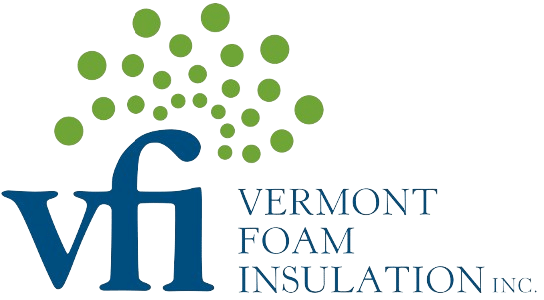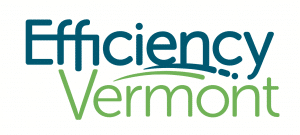A long line of icicles hanging from your roof is a sure sign that winter has settled in here in Southern Vermont and Southwestern New Hampshire. And while their arrival may get you excited for ski season and snowball fights, icicles can be a very bad sign for homeowners.
Icicles are one of the first signs of ice dams, and ice dams can cause serious problems for your home’s construction, like leaks and water damage. In this article, we’ll break down the causes of ice dams, talk about how you can get rid of them, and discuss why prevention is the best defense when it comes to ice dams.
How Do Ice Dams (and Icicles) Form?
Ice dams are a direct result of poor attic insulation and air sealing. When an attic isn’t properly insulated, heat from the home’s living space will rise up and out through the attic, heating up the home’s roofing shingles as it escapes. The warmed shingles will then melt any snow that has accumulated on them, sending streams of water running down the roof. Once it hits a colder section of the roof (a better-insulated spot) or reaches the eaves, it will refreeze, forming icicles and ice dams. Now, melting snow won’t be able to drain away from the home properly. Instead, it will pool on the roof, and eventually, start to leak into the home. Ice dams can cause serious damage, including:
-
Loosened roofing shingles
-
Broken gutters
-
Stained and sagging ceilings
-
Mold and mildew growth
-
Warping, rotting, and rusting of structural materials
-
Peeling paint and wallpaper
-
Wet insulation
Prevent Ice Dams with Attic Insulation & Air Sealing
Ice dams are hard to get rid of, and once they’ve formed, there’s little you can do to stop the damage they set into motion. That’s why it’s so important to prevent ice dams from forming in the first place. And the best way to do that is to update your insulation and air sealing. With proper insulation and air sealing, the heat your HVAC system generates will stay in your living space, instead of escaping into your attic and heating up your roof. This will also make it easier for your HVAC system to keep your home warm, which will lead to more comfortable indoor temperatures and could reduce your energy costs. There are several different types of insulation, including spray foam insulation and cellulose insulation, and a good insulation contractor will be able to evaluate your home and recommend the best solution for your needs.
The Spray Foam Insulation Contractor Local Homeowners Trust
Insulation needs to be properly installed in order to work correctly, and without proper air sealing to match, it will do little to keep heat in its place. At Vermont Foam Insulation, we have more than a decade of experience installing insulation, and we can help you choose the best insulation for your attic.
If you’re not sure whether your attic insulation is the problem, we can conduct an energy audit to evaluate your entire home, pinpointing the areas where heat loss is happening and providing targeted solutions that will prevent ice dams and have long-lasting impact on your home’s overall efficiency, comfort levels, and health. Since 2006, we’ve been the spray foam insulation company homeowners in Southern Vermont and Southwestern New Hampshire, from Bennington and Manchester to Sunapee and Keene, trust with their homes.








